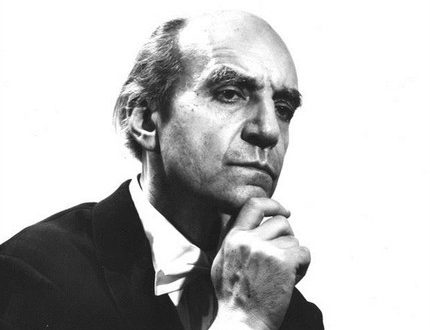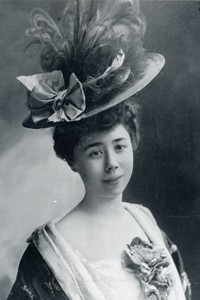
Monica I (I, Monica) |
I, Monica
Once, many years ago, compatriots – the French – nicknamed Monica Az “Mademoiselle piano”; this was during Marguerite Long’s lifetime. Now she is rightfully considered a worthy successor to an outstanding artist. This is true, although the similarity lies not in the style of playing the piano, but rather in the general direction of their activities. Just as Long was in the first decades of our century the muse that inspired Debussy and Ravel, so Az inspired and inspires French composers of later generations. And at the same time, the bright pages of her performing biography are also associated with the interpretation of the works of Debussy and Ravel – an interpretation that brought her both world recognition and a number of honorary awards.
All this was very subtly and accurately assessed by the Soviet musicologist D. A. Rabinovich immediately after the first visit of the artist to our country in 1956. “The art of Monica Az is national,” he wrote. “We mean not only the repertoire of the pianist, which is dominated by French authors. We are talking about the artistic appearance of Monica Az. In her performing style, we feel France not “in general”, but modern France. Couperin or Rameau sound from the pianist without a trace of “museum quality”, with life-like persuasiveness, when you forget that their wonderful miniatures are centuries distant from our days. The emotionality of the artist is restrained and invariably guided by intellect. Sentimentality or false pathos are alien to her. The general spirit of Monica Az’s performance is reminiscent of the art of Anatole France, strict in its plasticity, graphically clear, quite modern, although rooted in the classicism of bygone centuries. The critic characterized Monica Az as a great artist, without idealizing the artist’s merits. He noted that its best qualities – exquisite simplicity, fine technique, subtle rhythmic flair – are most clearly manifested in the interpretation of the music of the old masters. The experienced critic did not escape the fact that, in the interpretation of the Impressionists, Az prefers to follow the beaten path, and large-scale works – whether they are sonatas by Mozart or Prokofiev – are less successful for her. Our other reviewers also joined this assessment, with some nuances.
The quoted review refers to the moment when Monica Az was already fully formed as an artistic person. A pupil of the Paris Conservatory, a student of Lazar Levy, from a young age she was closely associated with French music, with composers of her generation, devoted entire programs to the works of contemporary authors, played new concerts. This interest remained with the pianist later. So, having arrived in our country for the second time, she included in the programs of her solo concerts the works of O. Messiaen and her husband, the composer M. Mihalovichi.
In many countries, the name of Monica Az was known even before meeting her – from the recording of both Ravel’s piano concertos, made with conductor P. Pare. And having recognized the artist, they appreciated her as a performer and propagandist of the almost forgotten, at least outside France, music of the old masters. At the same time, critics agree that if strict rhythmic discipline and a clear pattern of melodic fabric bring the impressionists closer to the classics in her interpretation, then the same qualities make her an excellent interpreter of modern music. At the same time, even today her playing is not devoid of contradictions, which were recently noticed by a critic of the Polish magazine Rukh Muzychny, who wrote: “The first and dominant impression is that the game is completely thought out, controlled, fully conscious. But in reality, such a completely conscious interpretation does not exist, because the very nature of the performer prompts him to make decisions, although they are pre-selected, but not the only ones. Where this nature turns out to be analytical and critical, we are dealing with “conscious unconsciousness”, with a lack of spontaneity, a kind of stamp of naturalness – as in Monica Az. Everything in this game is measured, proportional, everything is kept away from extremes – colors, dynamics, form.
But one way or another, and retaining to this day the “triune integrity” of the main – national – line of her art, Monica Az, in addition, owns a large and diverse repertoire. Mozart and Haydn, Chopin and Schumann, Stravinsky and Bartok, Prokofiev and Hindemith – this is the circle of authors that the French pianist constantly turns to, maintaining her commitment to Debussy and Ravel in the first place.
Grigoriev L., Platek Ya.





